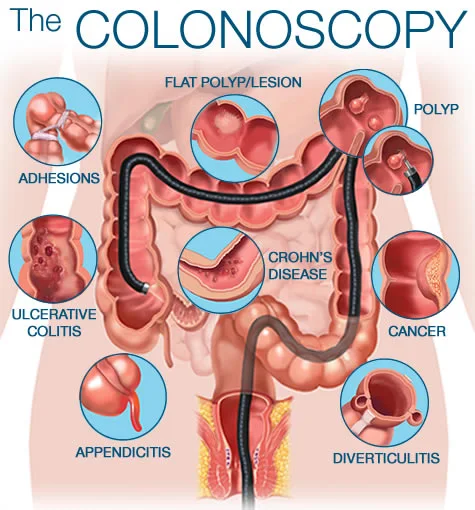Colonoscopy is a procedure that examines the colon by inserting a
tube through the rectum person or colonoscopy. Medical procedures by
doctors for patients with adenomas and the growth of polyps in the
colon, which is said to eventually lead to cause cancer if not treated.
This test is also a way for doctors to patients with suspected cancer to diagnose. In line with this, the risk of colonoscopy screening.
This test is also a way for doctors to patients with suspected cancer to diagnose. In line with this, the risk of colonoscopy screening.
The risk of colonoscopy is a threat that may occur because a patient
on the procedure. Risks are heavy bleeding, bowel tears, infections,
allergic reactions to sedatives and intestinal infections. But the risk
is higher for colonoscopies to remove polyps in the growth of the large
intestine.
If you or a loved one has been advised by doctors to undergo
colonoscopy, there are a few pieces of advice that can help reduce the
risk of a colonoscopy. Before going through the medical process, make
sure the colon is cleaned. This helps the doctor administrative
procedure for a good view of the colon wall to get.
One of the common risks of colonoscopy is perforation of the
intestine. Although relatively low, this risk is only increased if
polyps removed during colonoscopy, when the instrument is accidentally
puncture a hole in a thin layer of the colon. Even when these
complications occur, perforations can be repaired by emergency surgery,
especially when large visible cracks. Smaller cracks can be cured by the
stomach rest, antibiotics and routine control.
Another potential risk is bleeding a colonoscopy. This risk occurs in
a 1000 colonoscopy procedure and can be treated directly in the test or
may be settled for minor cases. Bleeding may occur within 7 days after
the colonoscopy, so patients are advised to be monitored constantly.
Postpolypectomy syndrome is a risk of colonoscopy if polyps are
removed during the procedure. Syndrome symptoms include fever, abdominal
pain and a sudden increase in white blood cells of patients in
particular from 12 hours to several days after the colonoscopy. Before
treatment, patients are advised to rest along with antibiotics and
intravenous fluids.
Two other known effects of colonoscopy is an infection and an
allergic reaction to sedative medication administered to the patient
during the procedure. The first is extremely rare and usually caused by a
sterile endoscope. The risk of the latter, however, may occur during
the procedure when the patient suddenly nausea, vomiting, low blood
pressure and response to a place where the medicine is injected
experienced.
Colonoscopy is a very low risk of about 0.35%. However, the risk
increased to 2.3% when the procedure was made during a colonoscopy
polypectomy. But overall, with the right equipment and diagnosis of
medical professionals and specialists, the risk can be greatly reduced
to a minimum.



